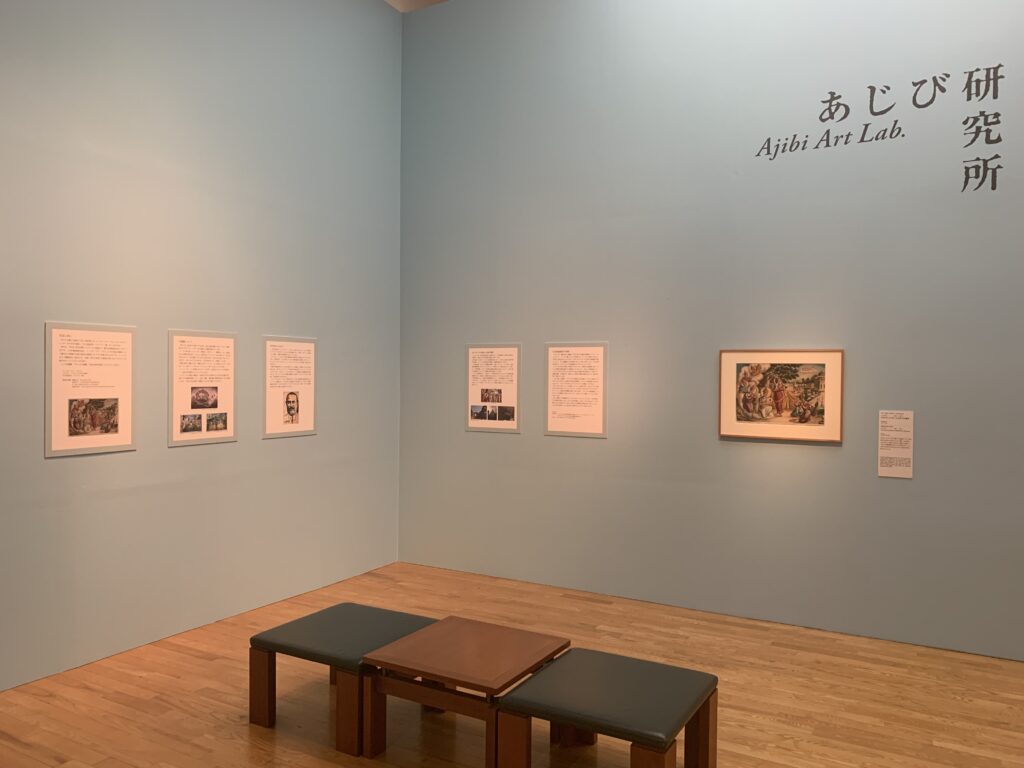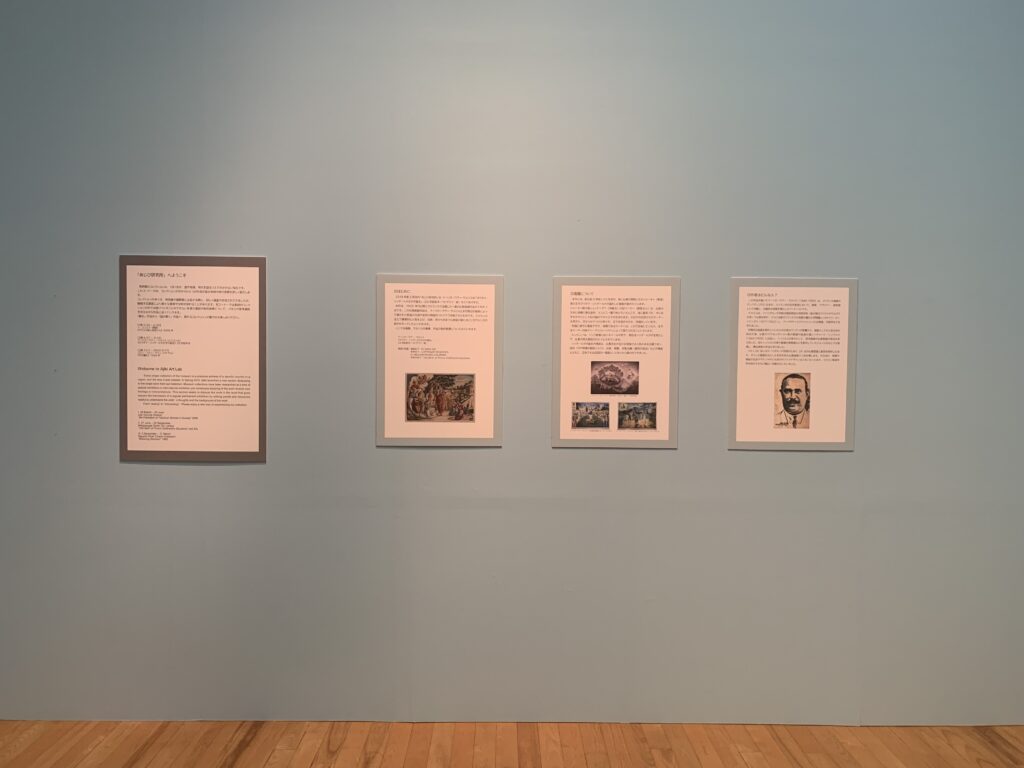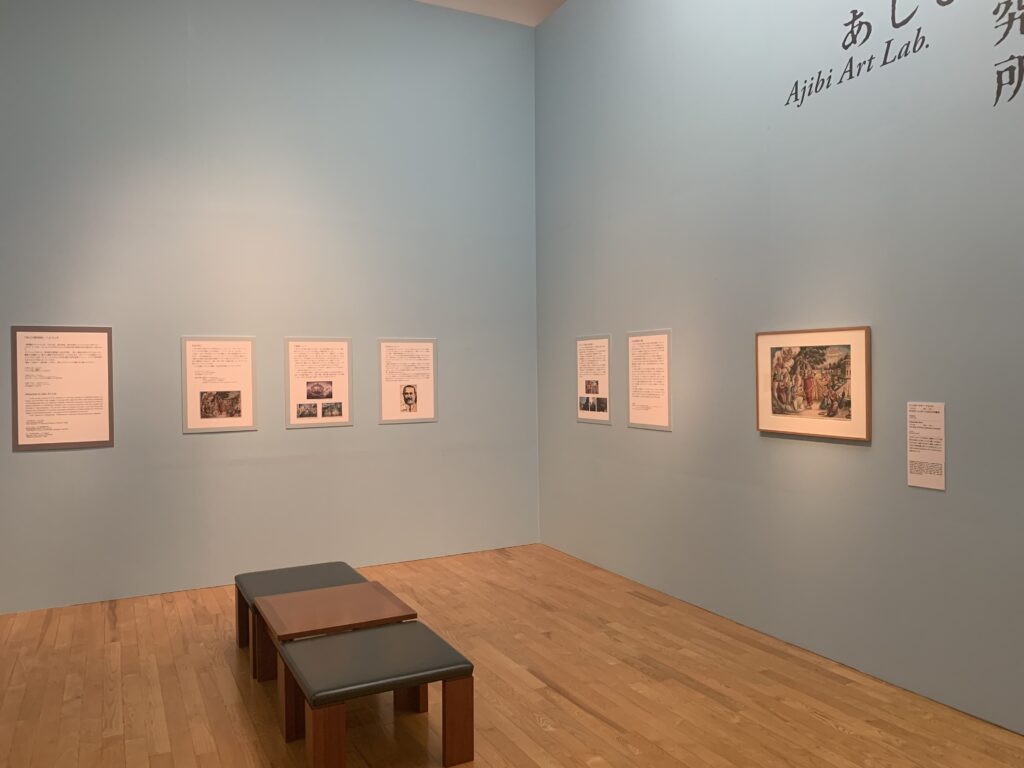
Maligawage Sarlis (Sri Lanka) "The Birth of Prince Siddhartha Gautama" mid 20c
Ajibi Art Lab vol.2 Maligawage Sarlis (Sri Lanka) "The Birth of Prince Siddhartha Gautama"
- Period
- Jun 27, 2019 〜 Sep 24, 2019
- Venue
Asia Gallery
Introduction
The second Ajibi Art Lab this year features The Birth of Prince Siddhartha Gautama by Maligawage Sarlis (early 20c, lithograph on paper).
This is one example of a series of Buddhism lithograph prints distributed in Sri Lanka after the 1920s. These Buddhist prints, which convey the life of Buddha and his previous life, were produced by Maligawage Sarlis and the painters around him. The prints became very popular throughout the country. It is said that all the Buddhist’s home in Sri Lanka then, from a big town to a small village, had a Sarlis’s print on the wall.
The following covers the theme of the work, the career of the artist, and the background of the work.
Theme of the work
This work depicts the birth of Gautama Siddhartha, a prince of the Shakya clan who was born around 5BC and later became the founder of Buddhism.
On the way home for childbirth, Queen Maya, the wife of the Shakya leader Suddhodana, gave birth to Siddhartha on the bank in the Lumbini garden. The prince was born from under her right arm. Queen Maya placed her right hand to the tree as she suffered from the sudden labor pains. Female servants surround Queen Maya while the Gods come down from the sky to celebrate the birth of the prince.
While the work is filled with blessings, Queen Maya died seven days after she gave birth, and the prince was raised by her sister, Mahapajapati.
Lumbini is located in a Nepali village near the border of India and is designated as one of the four holy places in Buddhism, being the birthplace of Siddhartha.
The birth of Siddhartha is a popular theme in art influenced by Buddhist culture. This theme has been depicted in Japanese Buddhist paintings repeatedly, with other popular themes including trial matches (testing his skill of archery and wrestling), the departure from the palace, hair-shaving, and the first teaching (shotenporin).
About the artist
Maligawage Sarlis (1880-1955) was born in Ambalangoda, in Southern Sri Lanka, and led the country’s modern art scene as a painter, designer, and sculptor.
Sarlis studied Buddhism at the Buddhist school (Pirivena) at Maligakande Temple (later becoming the University of Sri Jayewardanepura) and studied classical languages, such as Pali and Sanskrit, as well as prosody from Sri Lanka’s top intellectual monk, Hikkaduwe Sri Sumangala (1817-1922).
Sarlis started his career as a painter with influence from his uncle who was a religious painter. He then met Richard Henricus (1864-1933), a painter and mural painter who worked on the themes of both Buddhism and Christianity from whom Sarlis learned the Western-style Buddhist mural painting techniques. He also received training from Henricas’s brother, George, who created background pictures for theaters, in order to master the techniques used in stage art.
Between 1911 and 1920, Sarlis created 24 Buddhist murals and sculptures for the Maligakande Temple. He became popular for his Buddhist prints, such as the displayed work, which were created based on the murals. Sarlis also created adverts for newspapers and magazines as well as children’s book designs, and he founded the Ceylon Art College.
The Background to Buddhist Print production
In the 1920s, Sarlis’s temple murals were printed using lithograph technique in Germany by the Buddhist Businessman William Pedris, which were then sold back in Sri Lanka. According to the commercial success of the prints, a Sri Lanka company published a book featuring the mural prints, which made the Sarlis’s works even more popular. Sarlis’s prints were displayed everywhere in Sri Lankan homes, from town to countryside.
In addition to traditional Buddhist mural paintings, Sarlis, who was familiar with European culture and art, created new Buddhist images by incorporating elements such as Christian art and stage art. In this work, for example, the costumes of the characters are Indian-style, but they are drawn using a perspective which combines Western elements, such as gardens, buildings, flowers, and peacocks.
These new elements gained popularity in Sri Lanka, and various Buddhist stories that could only be found in the temple began to be seen in every family-home in Sri Lanka, and became established as popular Buddhist images.
The year 1925 was also the year of the historic writing of Message of the Buddha by Anagarika Dharmapala (1864-1933), the flagship of Sinhala Buddhist nationalism, later called the Father of Independence of Sri Lanka. It is believed that Sarlis’s Buddhist prints were widely disseminated to people by matching to the Dharmapala’s ideas.
The Fukuoka Asian Art Museum has a total of 20 items, including 14 items with Sarlis’s signs and 6 similar works that are considered to be by different artists. Some of them mention that they were printed in Germany, but this work does not specify the printing place. However, it is thought that it was produced in after the 1920s.
Reference
Ashiwa, Yoshiko. “Murals of Buddhist Temples and Modern Allegories: Image Houses in Post-Conflict Sri Lanka.
” In Bulletin of the National Art Center, Tokyo Vol.3. pp.82-126. 2016
Nakamura, Hajime. Buddha no Hito to Shiso (Buddha¬¬-His Personality and Philosophy). Japan Broadcast Publishing Co., Ltd. 1995
| Venue | Asia Gallery |
|---|---|
| Admission | Adult 200 JPY / High School&College 150 JPY / Free for Junior High School and Under |
| Organiser | Fukuoka Asian Art Museum |
| Contact | Tel: 092-263-1100 |






